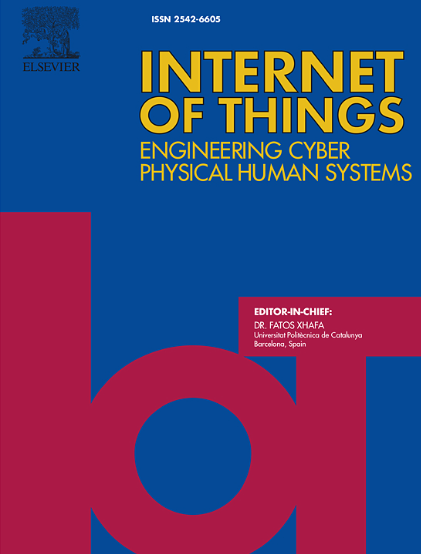Blockchain-enabled road vehicle emissions monitoring: A secure, scalable and private framework
IF 6
3区 计算机科学
Q1 COMPUTER SCIENCE, INFORMATION SYSTEMS
引用次数: 0
Abstract
Accurate vehicle emissions monitoring is essential for evaluating environmental impact and ensuring regulatory compliance. However, current monitoring systems primarily rely on periodic inspections and manufacturer-provided data; approaches with inherent limitations that can impact accuracy and provide limited opportunities for real-time verification. In the evolving landscape of connected vehicles, securely transmitting emissions data to regulatory authorities is therefore vital for accurate environmental monitoring and compliance. To address these shortcomings, we propose a blockchain-enabled framework using Hyperledger Fabric, which ensures data integrity, authenticity, and auditability without relying on centralised trust. Compared to our prior setup reaching about 250 transactions per second (TPS), our revised consensus policy and improved client simulation achieve a throughput of 360 TPS representing a 44% increase under large-scale conditions involving 27 Member States (MS). We employed the Experimental Platform for Internet Contingency (EPIC) infrastructure to emulate realistic network topologies, simulating up to 5,400 simultaneous vehicle clients and handling data from 280 million vehicles reporting annually. By integrating secure vehicle identity management with GDPR-compliant off-chain data storage, our solution addresses the transparency and manipulation gaps present in current systems. These findings show blockchain’s viability for large-scale, real-time vehicular emissions reporting, contributing to more trustworthy and sustainable transport infrastructures.
支持区块链的道路车辆排放监测:一个安全、可扩展和私有的框架
准确的车辆排放监测对于评估环境影响和确保法规遵守至关重要。然而,目前的监测系统主要依靠定期检查和制造商提供的数据;具有固有局限性的方法会影响准确性,并提供有限的实时验证机会。因此,在联网汽车不断发展的环境中,将排放数据安全地传输给监管机构对于准确的环境监测和合规至关重要。为了解决这些缺点,我们提出了一个使用超级账本结构的支持区块链的框架,该框架可确保数据的完整性、真实性和可审计性,而不依赖于集中信任。与我们之前达到每秒约250笔交易(TPS)的设置相比,我们修订的共识政策和改进的客户端模拟实现了360 TPS的吞吐量,在涉及27个成员国(MS)的大规模条件下增加了44%。我们使用了互联网应急实验平台(EPIC)基础设施来模拟真实的网络拓扑,同时模拟多达5,400个车辆客户端,并处理每年2.8亿辆汽车报告的数据。通过将安全的车辆身份管理与符合gdpr的链下数据存储相集成,我们的解决方案解决了当前系统中存在的透明度和操作漏洞。这些发现表明区块链在大规模、实时车辆排放报告方面的可行性,有助于建立更值得信赖和可持续的交通基础设施。
本文章由计算机程序翻译,如有差异,请以英文原文为准。
求助全文
约1分钟内获得全文
求助全文
来源期刊

Internet of Things
Multiple-
CiteScore
3.60
自引率
5.10%
发文量
115
审稿时长
37 days
期刊介绍:
Internet of Things; Engineering Cyber Physical Human Systems is a comprehensive journal encouraging cross collaboration between researchers, engineers and practitioners in the field of IoT & Cyber Physical Human Systems. The journal offers a unique platform to exchange scientific information on the entire breadth of technology, science, and societal applications of the IoT.
The journal will place a high priority on timely publication, and provide a home for high quality.
Furthermore, IOT is interested in publishing topical Special Issues on any aspect of IOT.
 求助内容:
求助内容: 应助结果提醒方式:
应助结果提醒方式:


